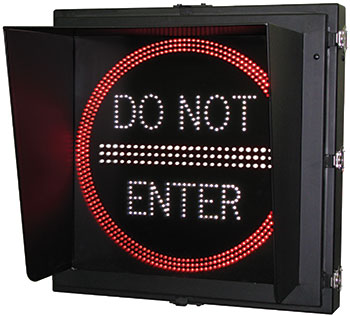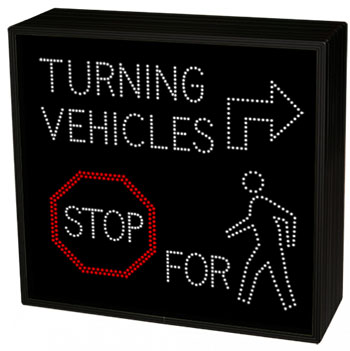- Products
- Accessories
- Stock Products
- Industry
- Information Center
- Login/Register
- Contact Us
Jan 25, 2023

The Manual on Uniform Traffic Control Devices (MUTCD) is a publication of the Federal Highway Administration (FHWA) of the United States Department of Transportation (DOT). It specifies the standards by which traffic control devices, such as road signs, traffic signals, and pavement markings, are designed, installed, and used.
Typically, street and traffic signs that are subjective to MUTCD standards are retro-reflective — meaning they are designed to reflect light back to its source, such as the headlights of a car. These signs are made with materials that reflect light back to the driver and are used to increase visibility in low-light conditions, such as dusk, dawn, or in inclement weather.
Contrarily, illuminated street and traffic signs are internally or externally illuminated by artificial light sources. These signs are more versatile, can be used in more settings, and are visible even in bright, direct sunlight when compared to retro-reflective signage. This makes them an effective solution for meeting the minimum brightness of retro-reflective signs, but with more versatility and better performance. As of January 2023, the MUTCD does not have standards for illuminated signage. Instead, the manual includes guidelines for the design, engineering, placement, and maintenance of them.

The MUTCD’s guidelines for illuminated signage says illuminated signs should enhance the legibility and visibility of signs, especially at night or in low-light conditions. Engineering studies should be conducted to determine if illuminated signs are required and examine factors such as the type and volume of traffic, the speed and characteristics of the roadway, and the distance at which the sign will be viewed. The MUTCD also has guidelines for designing, placing, and maintaining illuminated signs. These guidelines include requirements for the type and intensity of lighting, the color and contrast of the sign face, and the size and spacing of letters and symbols. Following these factors ensures illuminated signs are effective and safe for motorists and pedestrians.
Furthering to help ensure the safety of everyone on the road, there are also sizing guidelines for illuminated MUTCD Traffic Signs.
These specifications state the size of illuminated signs should be based on the character height — the vertical distance from the top of the tallest capital letter or symbol to the bottom of the lowest descender — of the letters or symbols on the sign. Minimum character heights for different types of illuminated MUTCD traffic signs are based on the speed and volume of traffic and the distance at which the sign will be viewed. The MUTCD specifies the following minimum character heights for illuminated signs:
It is important to note that these are minimum character heights. The actual size of illuminated MUTCD traffic signs may need to be larger based on the specific conditions at the location. It is also vital to ensure that the character height is appropriate for the typeface used on the sign. The MUTCD specifies guidelines for selecting typefaces based on legibility, readability, and recognition distance.
Periodically (around every five years), the MUTCD is revised to incorporate new technologies, address changing traffic control needs, and reflect current best practices. The current version of the MUTCD is Version 11, published in 2021.
Some of the key differences between MUTCD version 10 and 11 include the following:

Part 5 of Version 11 of the MUTCD is titled “Control of Traffic Through Traffic Control Signals.” It provides guidelines for the design, installation, and operation of traffic control signals and covers an array of topics related to traffic control signals, including:
Regarding MUTCD traffic signs that use light-emitting diodes (LEDs), the MUTCD offers specific guidelines, including:

Signal-Tech’s LED traffic signals are manufactured according to the latest MUTCD guidelines, and our build process evolves as the guidelines do. Are you interested in learning more about our MUTCD traffic signs? Contact our knowledgeable sales staff anytime to learn how they can benefit your municipality’s roadways!